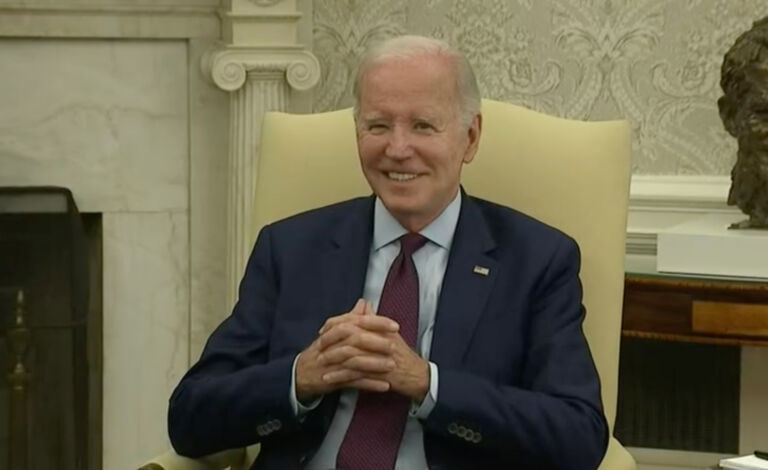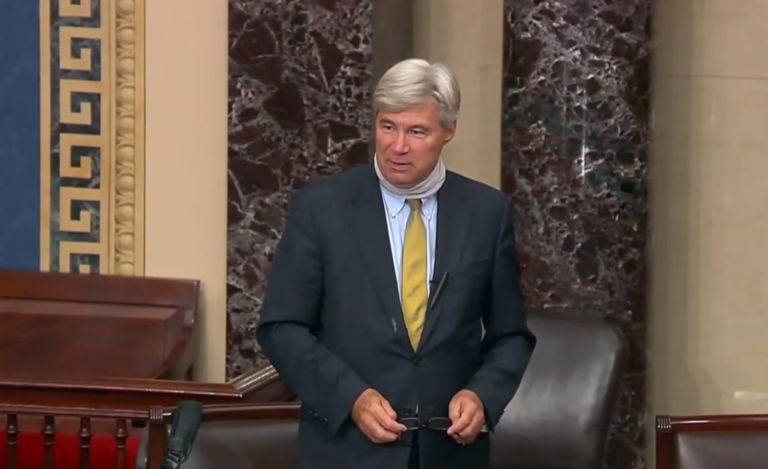The Joint Legislative Task Force on Education Finance Reform met on Wednesday, November 15. As a reminder (also noted in the committee’s first meeting notes), the task force is charged to study various weighted student formula funding models and develop a new funding model for the elementary and secondary public schools of North Carolina based on a weighted student formula.
Here is the slideshow presentation, and below are some highlights from the presentation. Per the Chair’s request, this was a conversational presentation, with questions asked by committee members throughout the meeting. Therefore, the notes below focus primarily on the committee’s discussion.
Presiding, Representative Horn (Co-Chair)
Michael Griffith, School Finance Strategist, Education Commission of the States
North Carolina School Funding
What is a high-quality funding formula? –> Adequate, Equitable, Flexible, Adaptable
Rep. Horn – Regarding per pupil expenditure (PPE) – We are one of fastest growing states in nation, so need a lot of teachers. If you have increasing number of students, and more teachers at bottom of pay scale, low PPE…doesn’t mean it’s low quality. Personally, have a hard time using PPE as benchmark for much of anything. PPE can go up or down, without much regard to quality.
Griffith – This is why we don’t have universal number. A lot will vary. Many variables that go into whether a state is spending the right about. Comes down to educational expectation within state, which will vary. Different cost structures and areas of spending. Nationally, 60% of funding goes to teacher spending and benefits. Holds pretty close in most districts around country.
Rep. Horn – Still generally resistant on focus of PPE because of variables [Griffith] mentioned.
Rep. Blackwell – Education isn’t about being sure we spend equal amounts of money on students, but that they receive education they need to be successful adult, citizen, and provider. Especially attracted to two points you make here to allow districts under high quality funding formula to have flexibility to meet their unique needs, and to be adaptable so state isn’t forcing programs on them to change their way of delivering services on students. However, PED report addresses issue that when we give flexibility and adaptability to schools, they don’t always spend money how we in Raleigh think they should. When does state say to district, OK, we have you these items and gave you flexibility and adaptability, but you aren’t getting it done…so we will now do it differently. Will you cover that, or will it come at a later time?
Griffith – Going to cover that at the end of the story
Rep. Lucas – NC is dependent school system. We fund entire school system (with LEAs sometimes subsidizing). How do we rate compared to other states in terms of PPEs and independent systems?
Griffith – Some states are completely state-funded/allocated by state: Hawaii, Michigan. Most other states have state and local fund mix.
Rep. Corbin – In the end, is it possible to set up plan for each district to submit a plan based on their system’s needs?
Griffith – Some states have set up funding formulas and then allow some school districts to request more funding in addition to formula. No state has taken away formula and replaced it with solely asks from districts.
Rep. Dixon – Will indeed be a heavy lift. I can make legitimate argument that our attempts to equate how we are doing relative to what we are spending and state to state/LEA to LEA comparison is invalid to start with. Has anyone looked at another starting point other than how much we are spending to decide on if we are doing a good job?
Griffith – Yes –> Are our kids hitting goals we need them to hit? –>Successful School Study (Massachusetts came up with accountability factor and then looked at funding. Has been leader in NAEP (National Assessment of Educational Progress) scores, and for at-risk kids, English learners, and Math & Science.)
Read general overview of this topic by JLF’s Dr. Terry Stoops: Public School Finance
Related to discussion of per-pupil expenditures: Per-Student Expenditure Figures are Not Always Meaningful
How does NC currently fund schools?–> State currently uses a “position allocation” system
- Fund certain number of positions per student
- Made a lot of sense when all students were attending brick and mortar schools in their respective neighborhoods
- Top-Down decision-making process
- Not intention, but ended up that funding is rigid and districts don’t have a lot of funding flexibility
Why would NC want to change current funding system? –> Inflexibility – position allocation systems have a hard time adapting to newer education programs (like charter schools, non-traditional career and tech programs, etc.)
NC’s Current Funding System
- Adequate? Hard to determine
- Equitable? Relatively (8 different measures to determine this, so depends on who measures it)
- Flexible? Limited flexibility in current system
- Adaptable? No
How do other states fund schools?
5 Generations of School Funding Formulas (on slide) –> States are slowly getting to 5th generation system
Ten years ago, would have seen more states in ‘other’ systems (their own, unique system). Wyoming –> system created by courts
Wisconsin–>most complicated system (or Delaware). Three different funding formulas.
Michigan–>Fully control funding within each system (redistribute taxes to each district). Over time, movement forward foundation of base formula. Working with some states to transition (See green states on map)
Foundation Formula (33 states) –> slide explains formula
No problem with having these (outside funding), but as these grow, it becomes more complicated. Shrinking it down can help.
Why did states move to this? Relatively easy to establish; districts have more decision-making autonomy
These types of formulas can be adjusted to includes various policy choices
More mandates –> less flexibility
Some states have minimum teacher salary schedule that hasn’t been updated in a while (Ex: Illinois= teacher must make min. of $1500 per year, but that clearly hasn’t been an issue for them)
Rep. Blackwell – Is there some implication that 5th generation listed is a high-quality funding formula? Seems to me that it’s lacking in flexibility and adaptability.
Griffith – Clarify–>In this generation: State tracks it, but doesn’t tell them how to use it. Held accountable. You could have 5th generation formula that doesn’t do it well. There’s the goal, and then reality. Could theoretically have older system that has greater flexibility, but would be hard to do.
Senator Sanderson – State/local split…did any of these states give local education ability to tax, or how do local entities raise money?
Griffith – Right now, 6-8 states that are dependent, where districts are dependent on city or county. Vast majority, state allows them to levy local property tax to raise the dollars. In some states, allowed to tax it without going to voters…in others, allowed to, but have to go to voters first.
Rep. Blackwell – Re: Teacher Pay Schedule. NC, Washington, and Delaware only ones with full pay schedule. If we go to another method, does this mean that local school districts would determine how much each teacher got paid within district?
Griffith – Yes.
Rep. Blackwell – Have other states transitioned away from full schedule, and what are paths we could take?
Griffith – TN is good example, with fairly similar formula as NC. Moved to three columns. Can choose to spend money within:
- Administrative Costs
- Classroom Costs
- Maintenance and Operation Costs
(Delaware tried to do this, but it became more complicated)
Rep. Blackwell – Combined with a hold harmless?
Griffith – TN intentionally kept teacher salary schedule in place while making transition. Districts wanted to spend more on teachers to keep quality teachers, so diverted money into that. Some believe that the way to control teachers’ salaries is to have a state-wide teacher salary schedule, but there’s actually no correlation between that and teacher salary level.
Listen to Dr. Terry Stoops’ discussion about N.C.’s school funding formulas: Assessing N.C.’s school funding formulas
Other articles related to discussion on teacher pay:
North Carolina Teacher Pay And The Real $50,000 Question
What would it take for NC to transition into high-funding formula?
States Adopting New Formulas–>Since 2000, several states created new school funding formulas (See slide)
Word of advice: The more you involve public/input in the process, the easier it will be for them to accept the process and result
What adjustment needs to be made for small, rural districts? Need to provide extra funding for those areas that are small districts/schools by necessity, rather than by choice.
Allowing individual districts to be held harmless helps so transition/new formula doesn’t have such a large shock factor.
Rep. Corbin (via text to Rep. Horn) – When considering wealth, we need to make average incomes primary measure. Properly value per student doesn’t work well in mountains or coastal areas because owners of expensive homes don’t live there.
Griffith – There are areas of high wealth – low income, and that needs to be addressed. There is a math formula, and one must do it as a multiplier to ensure the money isn’t transferred from poor places to wealthy places.
Rep. Lambeth – Could we get a list of state mandates that we impose on local districts? (Staff will do that.) Small counties and large counties – do you see this disparity across country in other states?
Griffith – Yes. The research shows there’s a higher cost when you move to really small districts (no economy of scale) and really large districts (urban areas with special/unique needs). States address this by allowing certain adjustments for these districts.
Senator Foushee – How is creating the formula best accomplished?
Griffith – Some states have used focus groups with superintendents, teachers, business administrators, and sometimes the public at town halls to start discussion. Other states have structured their ideas and then presented that among large focus group for feedback.
Rep. Blackwell – Is there any research that suggests that smaller or larger districts produce better student outcomes?
Griffith – Smaller schools/school districts do a better job with student involvement, higher graduation rates, and lower dropout rates. Would be better for kids to go to smaller schools, but cost is prohibitive. Historically, smaller districts can’t always provide courses or training for college that larger ones can.
Rep. Blackwell – Ability to read better in smaller schools and districts?
Griffith – When looking at Montana–>Small schools and districts. Traditionally, good at test scores and graduation. But hard time moving kids to next level, being career-ready. Then, look at Connecticut–>Lower graduation rate, but do have big comprehensive high schools with students going to college and being career ready. Very expensive.
Rep. Dixon – In assessing the wealth of area, is there data that addresses various sociological wealth factors (i.e. marriage stability, divorce rates, etc.)? Anything that shows the greater the stability, the easier it is to educate?
Griffith – No, but we could ask, “What is the student’s mother’s education level?” This indicates a student’s potential for being ‘at-risk’. We can’t ask this to all students. There are other variables, but haven’t gotten that research/data yet.
Rep. Dixon – Some talk about stagnant pond theory, which relates to mobility. Elements in society that don’t have mobile opportunities. If I am mobile and can move to a better suited district, do I deserve to be punished when I move out, and then the community I moved out of gets more funding?
Griffith – Once you get past 70% at-risk, some places require wrap-around services, where they keep schools open almost all day, every day. Higher cost, but not every school in state needs to have that program. Different cost structure to these schools.
Rep. Dixon – Another great challenge – both social and economic one – is, “How do we address ‘stagnant pond’ issue in order to get these kids on the side of being tax payers rather than tax consumers.”
Rep. Horn – How are other states dealing with students with disabilities?
Griffith – At first, some states did it as a ‘one-size-fits-all.’ Then, identified categories for parallel funding. Then, identified pools to address extreme disability/high-cost children. Then, moved toward services they need rather than categories (based on special-ed services needed). States have moved away from reimbursement on this–>hard for them to meet mandates, and a lot of paperwork involved.
For more…
Lisa Snell, education director for the Reason Foundation, explains the concept of student-based budgeting in education in 2016 for her interview Carolina Journal radio and during her presentation for the John Locke Foundation’s candidate education forum series.
Dr. Stoops gives his take on the budget that included the task force provision: Overview of the New N.C. Public Education Budget


